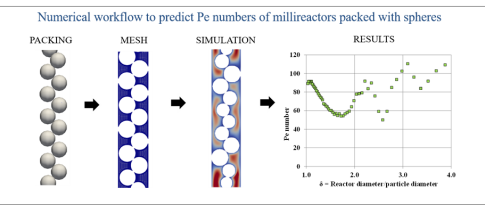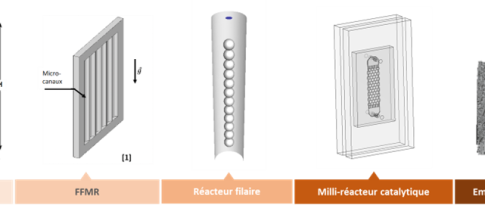17.10.2023
10 minutes of reading
Porous media are relevant in many technological and industrial fields set to play an important role in the future: energy storage, pollution control, water treatment, renewable energies, biofuels, food-processing and health.
The study of these media requires contributions from numerous different scientific disciplines, including computational fluid mechanics, geosciences and process engineering.
For the 16th edition of JEMP, the porous media study days event, hosted by IFPEN from 17 to 19 October 2023, four scientific developments, supported by significant examples, show the variety of fields of application of these porous media and the diversity of approaches deployed by our researchers to study them.
Modeling transfer in porous underground media: a multiscale approach
Underground reservoir modeling in essential for many applications: aquifer management, underground compound or energy storage, mineral and energy resource recovery (e.g., geothermal energy). Modeling makes it possible to optimize resource management while minimizing societal and environmental risks. However, in order to be efficient, this modeling must be multiscale, and IFPEN’s research teams are therefore guided by this requirement.
A better understanding of pollutant transport in the subsoil
Pollutant transport in soils is directly dependent on the heterogeneity of the media present (topology, structure, etc.), which itself is heavily impacted by certain human activities, such as agriculture, industrial operations and mining. The precise description of this phenomenon, across all time scales, can thus prove complex. Yet it is important when it comes to tackling major challenges, such as efficient waste water treatment, or providing access to high-quality drinking water to as many people as possible. In this context, IFPEN’s researchers have been working on methods to gain a better understanding of how pollutants are transported in the underground environment.
An hydrodynamic study for more efficient catalytic millireactors
High-throughput experimentation (HTE) reactors are more and more used in chemical engineering for catalyst screening because they have many advantages. Nevertheless, the behavior of these reactors varies significantly depending on certain parameters (such as the ratio between the diameter of the reactors and that of the particles). Itis important to fully understand this type of dependence to ensure optimal operation of the catalytic processes. A PhD thesis led to the definition of a calculation chain capable of accounting for the behavior of these catalysts.
The gas-liquid-solid matter transfer in fixed trickle bed reactors
Numerous catalytic processes employ fixed trickle bed reactors due to their many associated advantages. Simple to use, they demonstrate good performances in terms of bringing gases, liquids and solids into contact with each other. Nevertheless, a number of complex phenomena are involved and recourse to computational fluid dynamics is required in order to understand them. Research conducted within the framework of a PhD thesis delivered results in line with observations.









